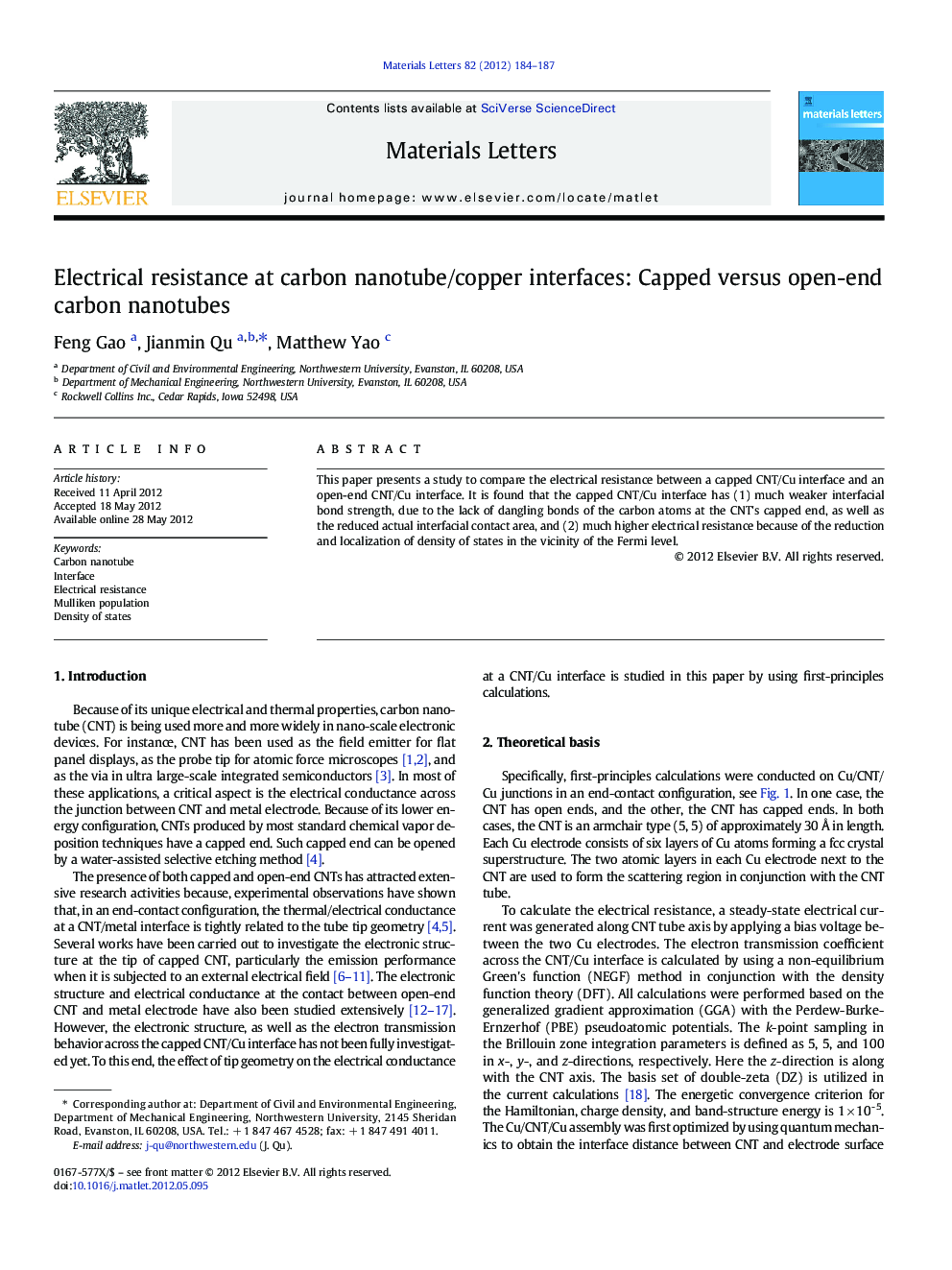| Article ID | Journal | Published Year | Pages | File Type |
|---|---|---|---|---|
| 1646567 | Materials Letters | 2012 | 4 Pages |
This paper presents a study to compare the electrical resistance between a capped CNT/Cu interface and an open-end CNT/Cu interface. It is found that the capped CNT/Cu interface has (1) much weaker interfacial bond strength, due to the lack of dangling bonds of the carbon atoms at the CNT's capped end, as well as the reduced actual interfacial contact area, and (2) much higher electrical resistance because of the reduction and localization of density of states in the vicinity of the Fermi level.
► The bond strength of CNT/Cu was evaluated by Mulliken Overlap Population. ► Capped CNT/Cu interface shows weaker bond strength than that of open-end CNT/Cu. ► Capped CNT/Cu interface also shows a higher electrical resistance. ► The localized DOS at capped CNT tip is responsible for the lower electron transmission.
